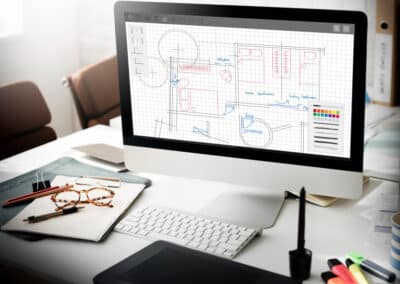Lighting designers create the atmosphere and set the tone for a production. They use lighting, colour filters, scrims, and dimmers to create the desired effect and bring a show to life. With knowledge of theatrical productions and technological skills, lighting designers can adjust lights from anywhere in the auditorium.
Table of Contents
Planning Lighting Layouts
The first step of a lighting designer’s job is planning what the light design will look like. This entails sketching out diagrams and drawings to visualize the placement and arrangement of lights, before constructing the physical setup. They must consider the sight lines of audience members, stage space and calibres, current technology, and types of fixtures required in order to create the most effective lighting design for their production.
Computing Lighting Requirements
After understanding the desired lighting effect and completing visual sketches, a lighting designer will also be responsible for computing the required electrical load in order to make sure all technical aspects of the show are safely handled. This includes installing ground fault protection devices where necessary and accurately measuring voltages, currents, and wattage. The designer must also document these measurements thoroughly in order to properly inform the production crew how many machines of each type (such as dimmers) will be required for their system.
Acquiring and Setting up Lighting Fixtures
Once the designer has figured out what kind of fixtures are necessary, they need to order them from a vendor or rental house. When these fixtures arrive on site, the lighting designer is responsible for making sure that all appropriate electrical equipment is used for installation and testing. This includes confirming correct fuse types, and cable length measurements, testing for adequate current flow through circuit conductors, and making any necessary repairs or replacements. Once setup is complete, the designer will also be responsible for overseeing light plots to make sure each fixture is located in the ideal position on stage.
Programming Lights for Events
After the lights have been installed, the lighting designer will be responsible for programming them for events. This process usually begins with researching the event type and developing a plan for which lights will be needed and when. The designer then programs specific looks into the light board to create different atmospheres or effects. Programming can also involve cueing moving lights during shows, setting up automated loops or sequences that can long run for extended periods of time, and designing colour palettes to fit the atmosphere. In order to successfully program the lights, designers must understand both technical operations as well as what kind of look is desired from concept to conclusion.
Building Relationships with Event Planners
It’s essential for lighting designers to build relationships with event planners and production teams in order to make the most out of their work. Good communication between a lighting designer and those who book the events can ensure that the design is successful. Additionally, designing lighting for repeat clients can help the designer’s portfolio grow as they become familiar with their needs and understand how to meet them. Strong relationships will ultimately lead to more gigs because past clients tend to reference back to a designer, they had a positive experience with. With this knowledge, a lighting designer can create unique looks every time, quickly adjust if needed during an event, and provide quality client service that keeps people coming back.
You have the most trusted and professional lighting consultant at your service, visit our website and contact neoalpha global to discuss your next project.








